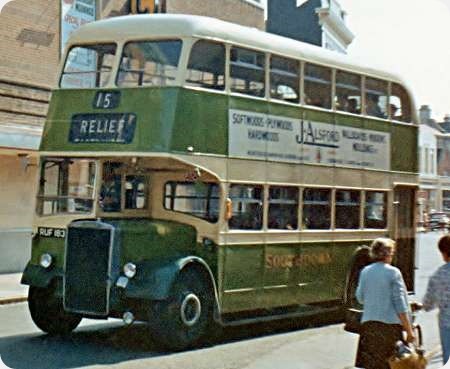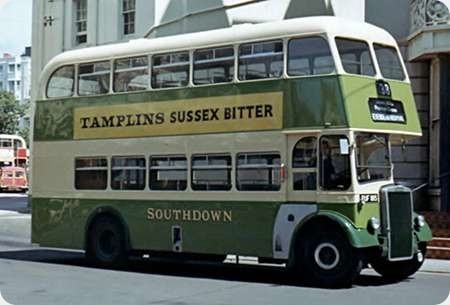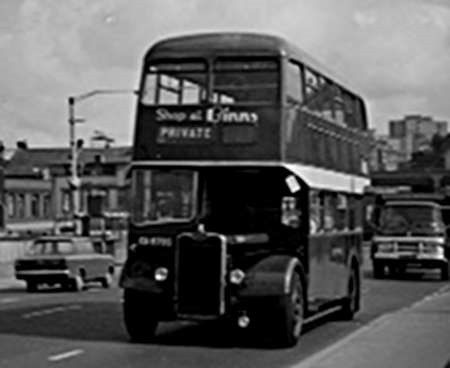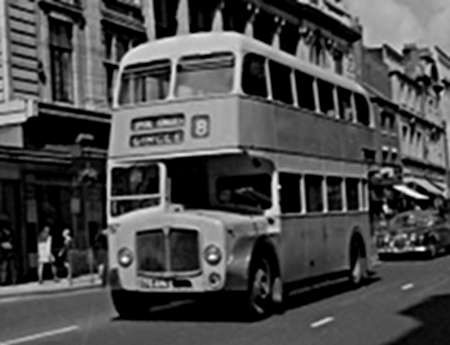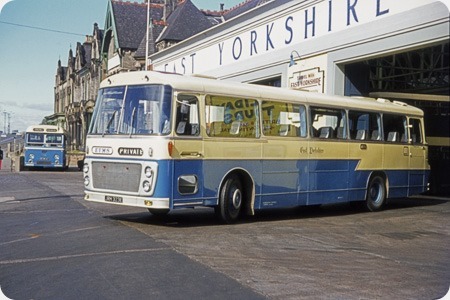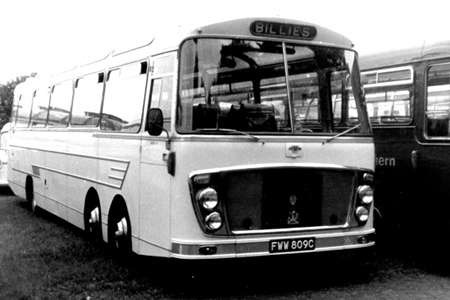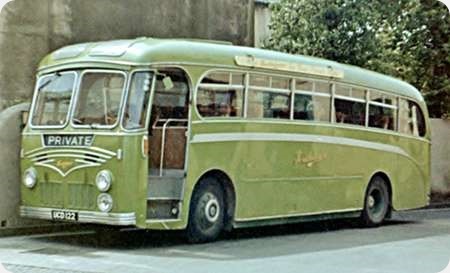Southdown – Leyland Titan – RUF 189/5 – 783/5
Southdown Motor Services
1956
Leyland Titan PD2/12
Beadle H59RD
There have been comments over the years about the last Beadle double deck bodies to be built delivered to Southdown in Nov/Dec 1956 but few photos. To try and rectify this I attach two photos of this batch No’s 777-788 Reg No’s RUF 177-188, That of 783 was taken outside Pevensey Road bus station, whilst not a very good photo I included it as this bus was later converted into a tree lopper after an accident at I believe Jarvis Brook railway bridge which was near Southdown’s Crowborough garage, I heard that the unfortunate driver was an Maidstone & District man trying to reach the garage. That of 785 was taken in Pool Valley Brighton when being reversed on to the stand for the Brighton local service 38 which later became the regular haunt of the RESL/6L’s the route had a significant amount of hill work. Believed to have been built by Beadle on Park Royal frames, the easy way to tell these near identical batches apart was the Beadle’s had sliding ventilators and the Park Royal’s had half drops.
Photograph and Copy contributed by Diesel Dave
30/01/18 – 16:33
In 1956/7, both NGT and Newcastle Corporation took delivery of batches of very similar Park Royal bodied vehicles.
Those of NCT were all AEC Regent V.
The 1956 NGT group vehicles were GUY Arab IV, and the intake for 1957 were R/D versions on a Leyland PD2/12 chassis.
Although they looked very similar to these, one notable difference was that both NCT & NGT were all four bay construction, whereas these are five.
Was that Southdown spec?
Ronnie Hoye
01/02/18 – 07:10
Further to Ronnie Hoye’s post, Northern took 28 Guy Arabs with Park Royal bodies in 1956, 20 for the main fleet and 8 for Tynemouth. There were 10 PD2s in 1957 for Northern. All were 63 seaters.
Newcastle took 20 high bridge examples in 1956, 137-156 (XVK 137-156) and 20 in 1957, 157-176 (157-176 AVK) ten of which were low bridge. The high bridge vehicles seated 62 and the low bridge vehicles 58.
Living north of the Tyne, I was more familiar with the Tynemouth and Newcastle buses. I thought they were well proportioned buses, but the interior finish on the Newcastle vehicles left a lot to be desired, red painted lining panels, narrow seats and a distinct lack of ventilation. Tynemouth’s vehicles were far better finished in my view.
A couple of photos are attached illustrating a Northern vehicle and one of Newcastle’s 1957 high bridge buses.
R Slater
02/02/18 – 05:37
Your not wrong, the NCT vehicles were positively spartan in comparison to those of the NGT Group.
It was the same story with the Orion bodied Leyland PD’s that followed these. Every expense seems to have been spared on the NCT vehicles, with their painted metal interiors, whereas the NGT were covered.
Those of Tynemouth & Wakefields were finished to an even higher standard with moquette upholstered seats.
Getting back to the Park Royal GUY Arab IV’s. As you say, Tynemouth & District had eight of them, FT 9408/15 208/15 I started as a driver at Percy Main in 1967, so by now they were nearly 11 years old, but they were VERY reliable, and for all their age they were a delight to drive, but how much better would they have been if they ha been fitted with a G6LW rather than a 5?
214 was written off after an accident, and dismantled for spares, and the remainder were transferred to Northern in 1968.
By this time we had quite a number of the superb Alexander bodied CRG6LX Daimler Fleetlines, so I was probably in a minority, but I for one was sorry to see them go.
Ronnie Hoye
08/02/18 – 14:46
I could go on a real nostalgia fest here, Ronnie. Tynemouth was my local fleet. My memories date from the mid 1950s when I can just about remember the ECW rebodied Leyland TD5s and the trio of AEC Regents rebodied by Pickering. Wallsend locals were largely in the hands of successive batches of Guy Arabs. I used these services to go the the Buddle school and later the grammar school. I recall end of school day transport at the Buddle was provided by four vehicles, two for High Farm and two for Sunholme, usually older vehicles but sometimes newly overhauled vehicles doing what I assume were running in turns. The Guys gave way to Leyland PD2s and PD3s, Atlanteans and Fleetlines. I’ll shut up now!
Richard Slater
11/02/18 – 06:23
Like you Richard, our school bus was either one of the Pickering rebodied pre war Regents or, occasionally, one of the Weymann bodied, early post war variety. As the bus came off an earlier "Workmen"s service it was usually late,a source of delight to we pupils, but consternation to the school.
In 1957, I started to attend Tynemouth High School, where it was decided we lived near enough to walk to school. 4X4s were rare and mostly restricted to the farming community in those days!
I remember the ECW rebodied TD5s also largely because they were quite fast and refined mechanically, for a bus of that era.They seemed to spend a lot of their time on the 5 Whitley Bay (St. Mary’s Lighthouse) to Newcastle (Haymarket)until about 1955, when they I think (its all a long time ago now) they were largely replaced on that route by the 1955 Orion bodied Guys.
William Mill
Quick links to the - Comments Page - Contact Page - Home Page
